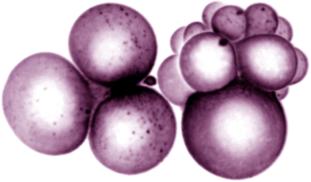Please wait...
About This Project
Embryonic cells make choices that guide the differentiation of their clonal descendants. Such decisions establish the outline of a snail's whole body in a spatially patterned array of just twelve diverse, unambiguously identified single cells which are differentially exposed to a signal briefly emanating from a point source. We want to know if (and how) a change in this pattern causes the neck-founder cells to inappropriately form trunk structures, and if lack of a neck makes the head pop off.

Browse Other Projects on Experiment
Related Projects
A Microbial Art Palette Rooted In Place to Support Community Science
BioArtBot is an open-source initiative that enables users to create playful pixel designs using colored...
Exploring self-powering biomaterials using embedded proteins
Proteins offer the promise of regenerative forms of power for devices. Current power sources fail to disassemble...
The Living Canoe
Polynesian voyaging stands as a testament to the engineering and navigation skills of Pacific Islanders...





